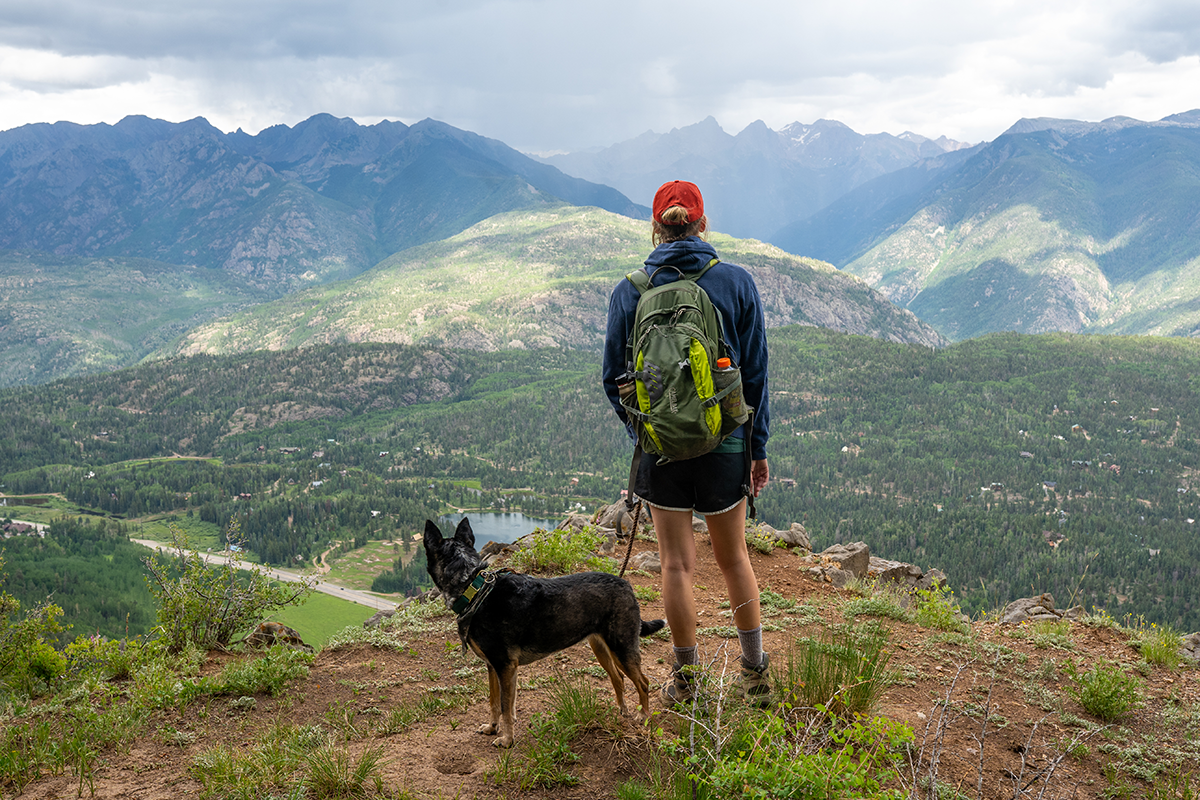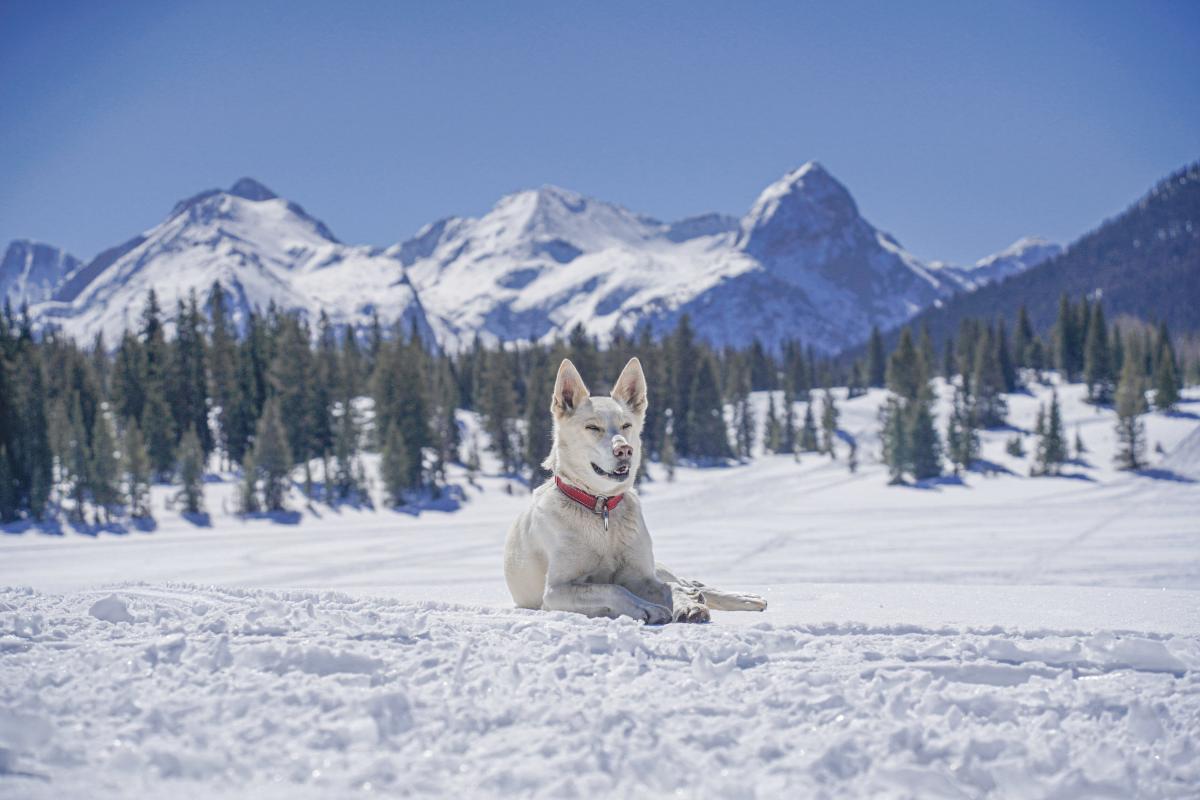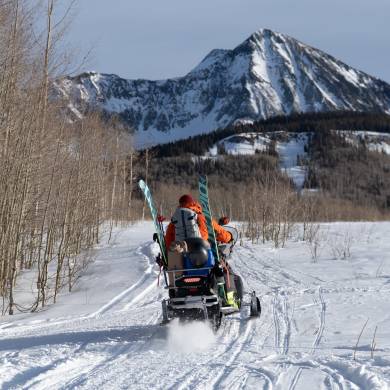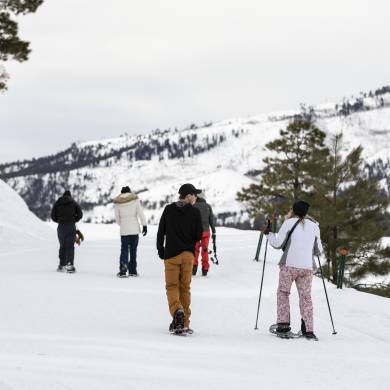Hiking with your dog can be an awesome experience. Nothing beats exploring the great outdoors with a companion who’s always excited, curious, and present in the current moment.
It’s important to keep your dog safe when hiking though. Without preparation, wilderness trails can be dangerous places for your pet.
In this article, we’ll discuss mistakes to avoid when hiking with your dog. By being aware of these potential missteps, you’re much more likely to have a safe and enjoyable hike with your pet.

Mistake #1: Overestimating Your Dog’s Fitness, Health, Or Abilities
A big mistake is planning a hike based on your fitness levels and preferences, rather than the ability of your dog.
According to The Dog Clinic, dogs have varying fitness levels depending on their health, age, and breed. Always start with short hikes to see how your dog copes, then gradually increase the distance if she doesn’t seem exhausted.
Remember, many dogs will push themselves beyond the point of exhaustion to keep up with their owner. This risks heat stroke and a variety of other health problems, so be your dog’s advocate when it comes to their fitness and abilities.
On a related note, make sure you have a plan for the hike before you leave. This should include the trails you’re planning to walk, how long you expect the hike to take, and any potential dangers.

Mistake #2: Not Checking The Trail Rules and Terrain
Before setting off on a hike with your dog, it’s vital to check the trail rules and terrain. Not all trails are suitable for dogs – and some trails might not allow canine companions.
For example, many trails in Colorado allow dogs, but those that lead to a reservoir often don’t. Some national parks also don’t allow dogs, as they can disrupt the area’s natural ecosystem.
The type of terrain is also important. If you’re going to be walking on rough ground or rocky terrain, be honest about whether your dog is ready for such a challenge. Just like humans, it takes time for a dog’s paws to adapt to rougher ground.
Check the elevation of the hiking trails too – especially if you’re travelling from somewhere with a lower elevation than Colorado. Higher trails have less oxygen, which can make hiking more difficult for both you and your dog.
Of course, you should also clear up any poop from the trail and carry it with you. Don’t leave it behind to collect later, as it’s easy to forget!
Mistake #3: Underestimating the Dangers of Local Wildlife
Whenever you go hiking, it’s a good idea to research dangerous wildlife in the area. This is particularly important when hiking with a dog, as animals that might not be a threat to humans could be dangerous for your pet.
In Colorado, for example, mountain lions, black bears and coyotes can all be dangerous for dogs (and humans). While attacks are rare, it’s important to avoid getting too close to wildlife and to know what to do in an emergency.
It’s not just large animals that can pose a danger to your pet. Poisonous spiders and snakes can be lethal too.
Tip: Always check your dog for ticks after a hike (along with burrs, cuts, and other foreign objects). These parasites are common in woodland and can cause serious illness. Speak to your vet about preventative treatment to keep your pet safe.
Mistake #4: Not Bringing Enough Water
Unlike humans, dogs can’t sweat to keep cool. Instead, they pant to maintain a lower body temperature.
Panting is less effective than sweating, so dogs are more prone to overheating and dehydration. That’s why it’s essential to bring plenty of fresh water to keep your dog cool and hydrated. Always bring more water than you think you’ll need!
Even with regular water breaks, you should watch your dog for signs of dehydration. Examples can include:
- Panting
- Thick saliva
- Loss of skin elasticity
- Lack of energy
- Dry nose and gums
- Sunken eyes
To test for a loss of skin elasticity, gently raise up your dog’s skin around the shoulders. If it doesn’t instantly go back into its previous position when you let go, then your dog may be dehydrated.
You need to act fast if you think your dog is getting dehydrated. Start by giving him some water, then take him to a vet immediately. He may need intravenous fluids to rehydrate.
Tip: You shouldn’t let your dog drink from local water sources. Streams, ponds, lakes, and standing water can all contain parasites and bacteria.
Mistake #5: Not Checking The Weather Forecast
It’s vital to check the weather before heading out on a hike. Be prepared to adapt your plans depending on the conditions.
For example, if it’s going to be a hot day, then you might want to consider bringing extra water or a cooling bandana for your pet. Of course, if the weather is going to be dangerously hot, then you should postpone the hike to another day.
If you’re hiking on a chilly day, then you may want to bring a dog coat to keep your pet warm.
Mistake #6: Forgetting Essential Items For Your Dog
You don’t need to pack too much equipment when hiking with your dog, but there are some essential items that you should never be without. These include:
- A leash (avoid retractable leashes as these can be dangerous if your dog suddenly starts running)
- A harness for attaching the leash, along with a collar for your pet’s ID tag
- Dog treats for training or for an energy boost
- Poop bags (bring plenty!)
- Lots of water and a portable water bowl
- Dog first-aid kit
If you’re hiking on rough ground, then you may also want to consider dog booties for your dog. These provide extra grip and protect your pet’s paws – although many dogs need to be slowly introduced to them using positive reinforcement.

Conclusion
There are many potential dangers when hiking with your dog. Don’t let that put you off though! With a small amount of preparation and common sense, you and your pet can safely explore the countryside together.




